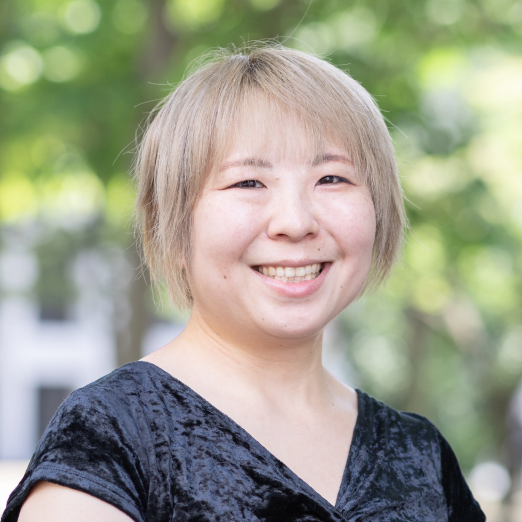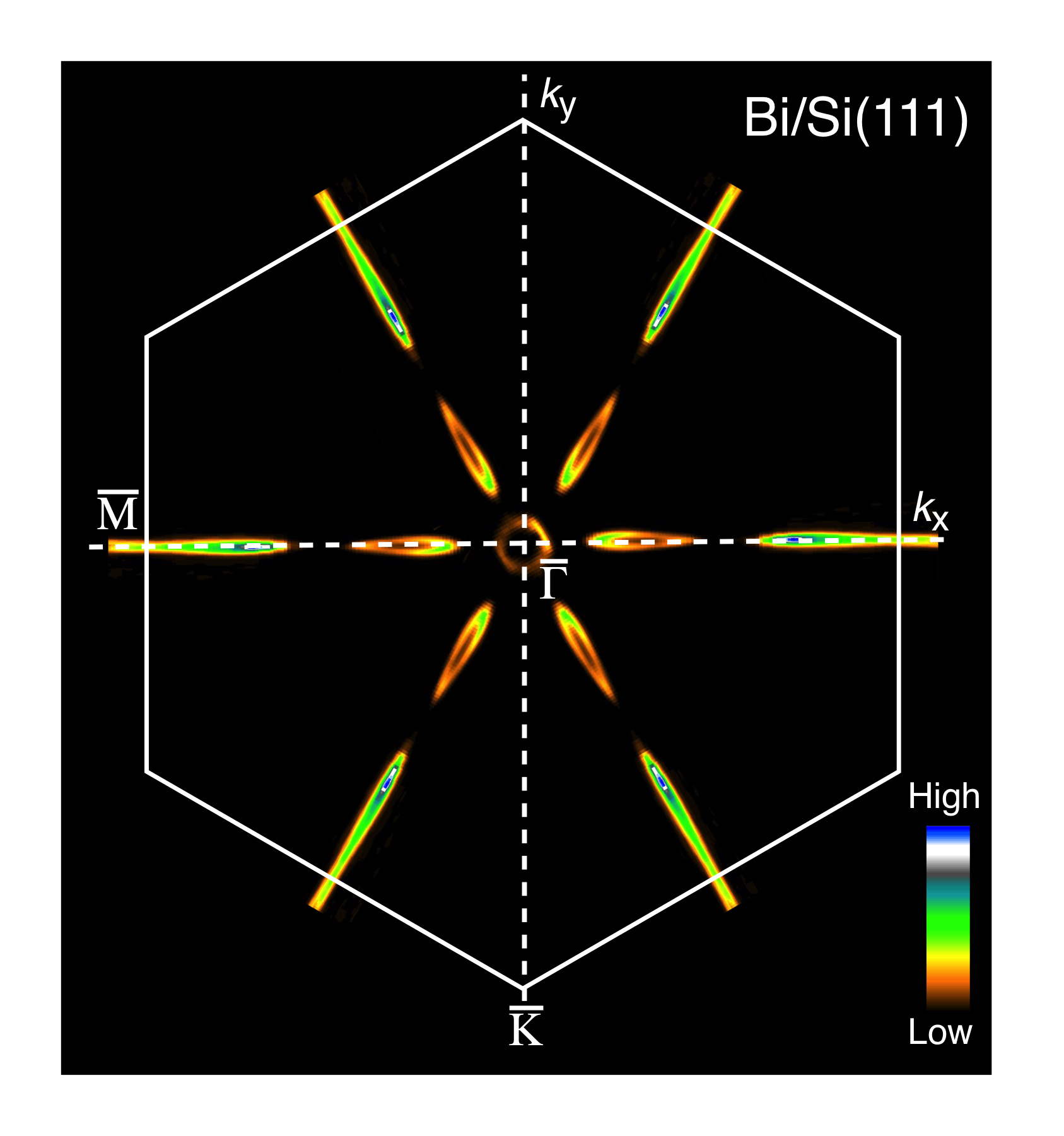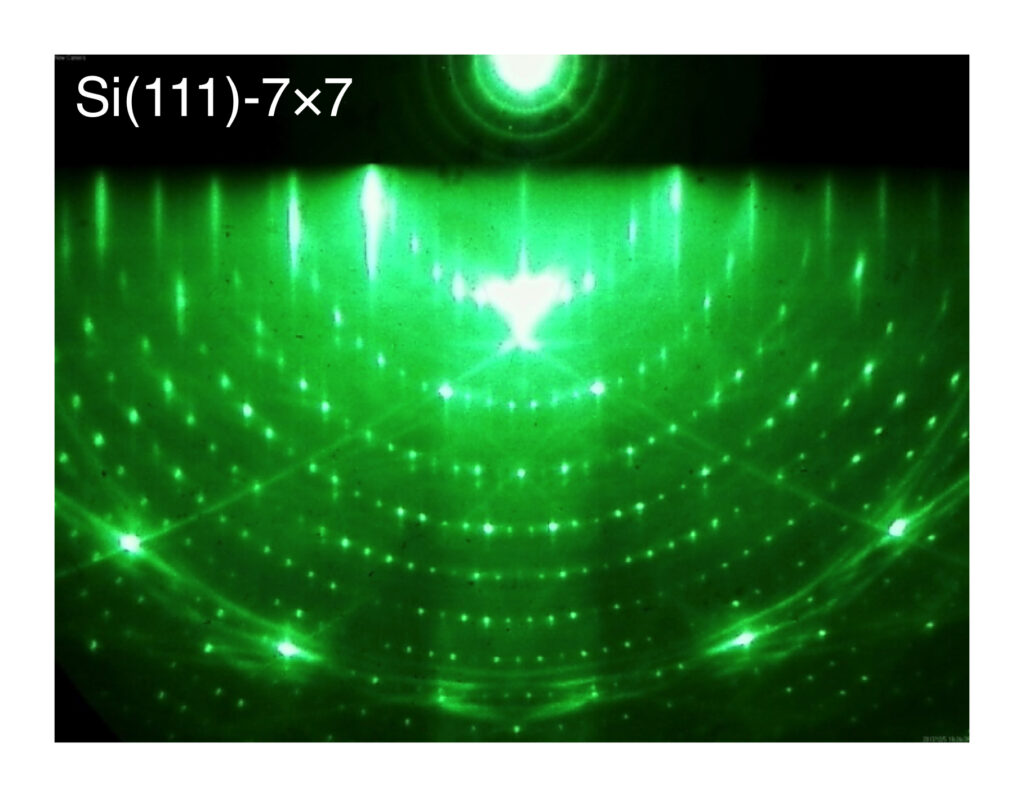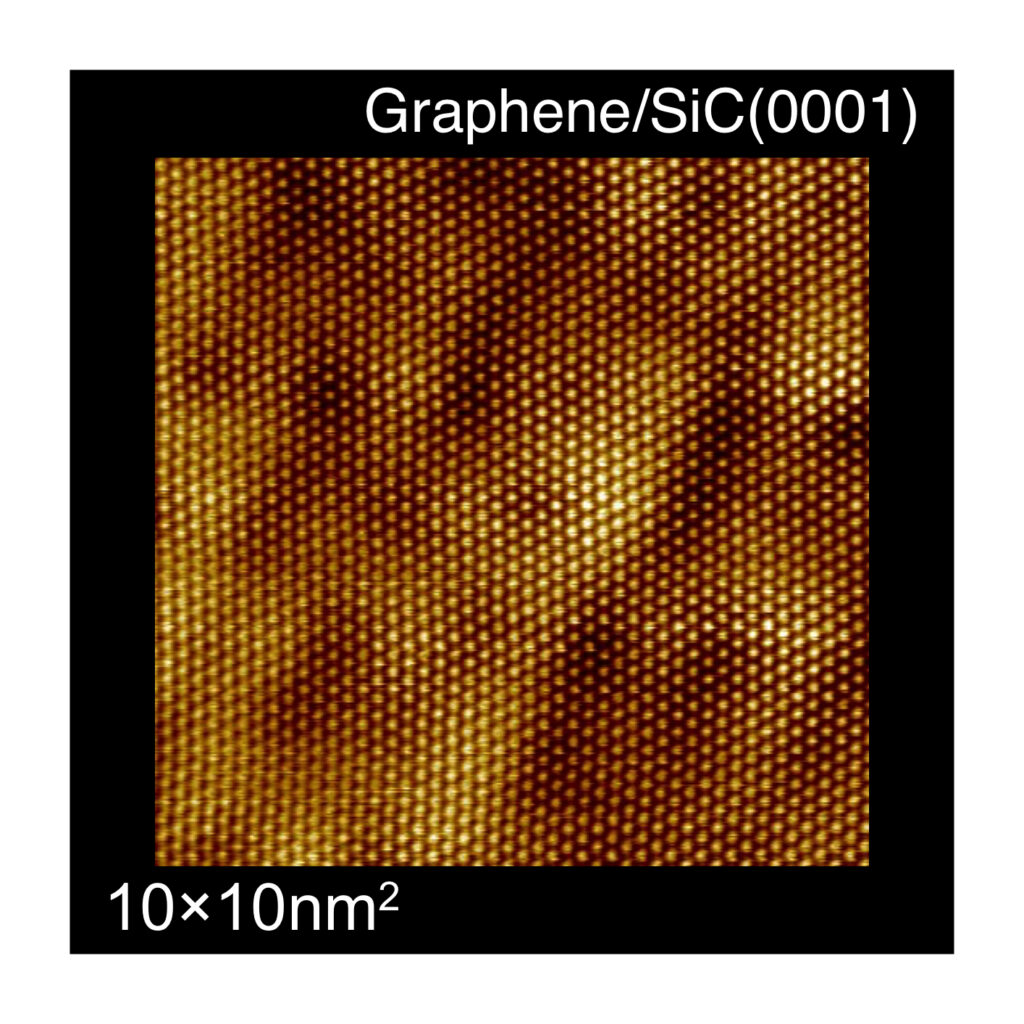
高山 あかり 教授
Kenji YASUDA
専門分野
表面物理学
多彩な実験技術を駆使して切り拓く表面・界面物理学の世界
研究テーマ
新奇機能性材料の創成と先端計測による物性解明
キーワード
低次元物理, 電子状態, 構造解析, スピン伝導
LINKS
RESEARCH OVERVIEW
研究概要
物体の端っこである「表面」は、3次元の「結晶」とは全く異なる性質を持つことがあります。「結晶」は、原子が3次元空間において周期性を持って並んだ状態を指しますが、物事には必ず終わりがあるように、どんな物体も必ず端っこ、つまり「表面」が存在します。「表面」では、原子の並びの周期性が破られてしまうので、結晶の性質を理解するには邪魔なものとして扱われていました。しかし、様々な実験装置の開発が進み、表面に着目した研究が行われたことで、表面では、結晶とは異なる2次元の周期性をもつこと、表面特有の物理現象が起きることなどがわかってきました。2次元である表面や界面、1次元であるエッジ、0次元のドットなど、低次元系でおこる不思議な物理現象は、まだまだ未解明なことがたくさんあり、私たちの研究分野では様々な実験手法を用いてその詳細に迫ります。
また、最近では、結晶表面に別の元素の原子を結合させて人工的に作成した「表面超構造」や「原子層物質」の研究も盛んに行われています。2010年ノーベル物理学賞の研究対象であるグラフェンは、3次元結晶であるグラファイトを限界まで薄くした2次元の原子層物質で、高易動度・高柔軟性・高安定性などの点から注目を集めています。鉄とセレンの化合物であるFeSeは、3次元結晶では7.2Kで超伝導に転移しますが、 SrTi03基板の上に1層だけ成長させることで超伝導転移温度が100Kを超えることが報告されています。2016年ノーベル物理学賞の理論が元になったトポロジカル絶縁体は、3次元結晶部分は絶縁体であるが2次元表面部分は金属、といった不思議な性質を持っています。
物質の性質(物性)は、電子の動きが深く関わっているので、電子がどのように動いているのかがわかれば、物性を理解することができます。また、どのような物性を持つかを調べることも重要です。もちろん、原子がどう並んでいるのかも詳しく知る必要があります。私たちの研究室では、低次元物質を創る・見る・測る・理解するをモットーに、走査トンネル電子顕微鏡や光電子分光、電子・陽電子回折などの様々な実験手法を駆使して、低次元物性の解明を行います。
MESSAGE to STUDENTS
学生へのメッセージ
大学で物理を研究する一番の醍醐味は、この世界の理を知っているのは今世界で自分だけ!というタイミングに出会えることです。私が専門とする「物性物理学」は、ざっくり言えば、「どうして金属には電気が流れるのか?」とか「なぜ鉄は磁石にくっつくのか?」といった「物の性質=物性」を明らかにする学問です。物性物理学によって様々な物質の性質を理解してきたことで、より良い性質や新しい性質を持った物質が発見・創出され、それらの物質が工業製品に応用された結果、現代の便利な生活が達成されました。スマホが使えるのも、リニア新幹線が開発されたのも、物性物理の恩恵だと私は思っています。錬金術師のように人工的に新しい物質を創り、探偵のように物理法則から現象を論理的に説明する物性研究を通して、誰も知らない世界の一端を明らかにしてみませんか?
学歴・経歴
学歴
2008年3月 福島大学, 教育学部, 学校教育教員養成課程 卒業
2010年3月 東北大学, 大学院理学研究科, 物理学専攻 博士前期課程修了
2013年3月 東北大学, 大学院理学研究科, 物理学専攻 博士後期課程修了 博士(理学)
職歴
2010年4月 – 2013年3月 東北大学, 日本学術振興会特別研究員(DC1)
2013年4月 – 2014年3月 東北大学, 原子分子材料科学高等研究機構, 日本学術振興会特別研究員(PD)
2014年4月 – 2018年3月 東京大学, 大学院理学系研究科物理学専攻, 助教
2018年4月 – 2020年3月 早稲田大学, 理工学術院先進理工学部物理学科, 専任講師
2020年4月 – 2025年3月 早稲田大学, 理工学術院先進理工学部物理学科, 准教授
2023年11月 -2025年3月 東北大学, 多元物質科学研究所, 准教授(クロスアポイントメント)
2025年4月 – 現在 早稲田大学, 理工学術院先進理工学部物理学科, 教授
東北大学, 多元物質科学研究所, 教授(クロスアポイントメント)
所属学協会
- 日本物理学会
- 日本表面真空学会
- 日本放射光学会

TAKAYAMA Akari
Professor
Field of study
Surface Physics
Frontiers of surface and interface physics are explored with diverse experimental techniques
Research Themes
Synthesis of novel functional materials and elucidation of their properties through advanced measurement techniques
Keywords
Low-dimensional physics, electronic states, structural analysis, spin conduction
RESEARCH OVERVIEW
The surface, which represents the edge of an object, has different properties from three-dimensional (3D) crystals. A crystal is a solid material whose constituents (such as atoms, molecules, or ions) are arranged in a highly ordered microscopic structure along three-dimensional axes. However, every crystal always has its edge, namely the surface. In recent years, there has been substantial research focused on surfaces, driven by advancements in various experimental techniques.
-Graphene, the thinnest form of graphite, is garnering significant attention due to its high mobility, flexibility, and stability.
-FeSe, a compound of iron and selenium, has been reported to exhibit a superconducting transition temperature above 100 K when grown in a single layer on a SrTiO3 substrate, whereas the 3D bulk crystal becomes superconductive only at 7.2 K.
-Topological insulators are known to be insulating in their interior but possess conducting states on their surface.
To understand the physical properties of these materials, it is essential to have knowledge of their electronic properties. Investigating these physical properties is also crucial. Furthermore, understanding the surface structure is vital. In our laboratory, to elucidate the physical properties of low-dimensional systems, we conduct various experiments using scanning tunneling electron microscopy, photoelectron spectroscopy, electron/positron diffraction, and other techniques.
MESSAGE to STUDENTS
The greatest pleasure of studying physics in university is experiencing moments when you realize you’re the only person in the world who knows the truth about the world. My specialty, condensed matter physics, is roughly the study of the properties of matter. Thanks to our understanding of the properties of various materials gained from condensed matter physics, we have discovered and synthesized materials with better or new properties. These materials have been applied to industrial products, leading to the convenient lifestyle we enjoy today. I believe that our ability to use smartphones and the development of the linear Shinkansen are both benefits of condensed matter physics. In condensed matter research, we synthesize new materials like alchemists and explain phenomena based on physical laws like detectives. Why not join us in uncovering a corner of the unknown world?
Education and Career
Education
2008: Graduated from the Faculty of Education, Fukushima University
2010: Completed a Master’s degree at the Graduate School of Science, Tohoku University
2013: Ph. D(Science), Tohoku University
Career
2010-2013:JSPS Research Fellowship for Young Scientists, Tohoku University
2013-2014:JSPS Research Fellowship for Young Scientists, WPI-AIMR, Tohoku University
2014-2018:Assistant Professor, Department of Physics, The University of Tokyo
2018-2020:Assistant Professor (PI), Department of Physics, Waseda University
2020-2025:Associate Professor, Department of Physics, Waseda University
2023-2025:Associate Professor, Institute of Multidisciplinary Research for Advanced Materials, Tohoku University (cross-appointment)
2025: Professor, Department of Physics, Waseda University
Professor, Institute of Multidisciplinary Research for Advanced Materials, Tohoku University (cross-appointment)
Professional Memberships
- The Physical Society of Japan
- The Japan Society of Vacuum and Surface Sciences
- The Japanese Society for Synchrotron Radiation Research



